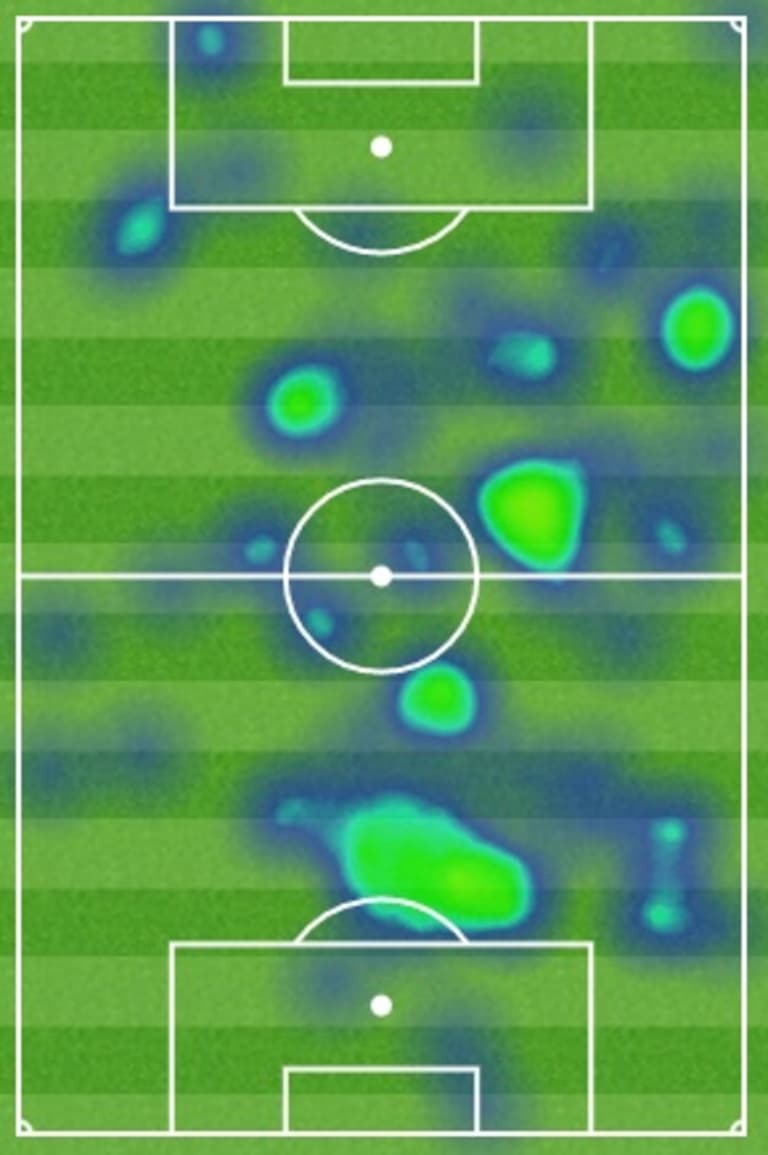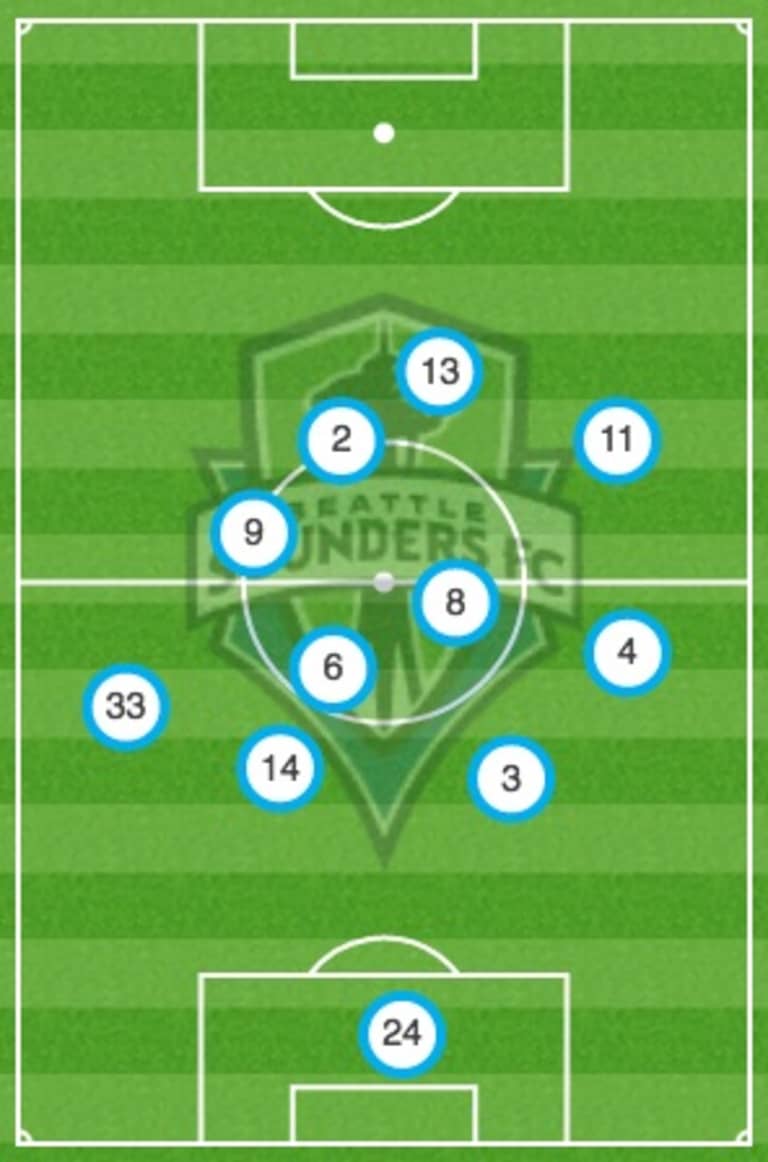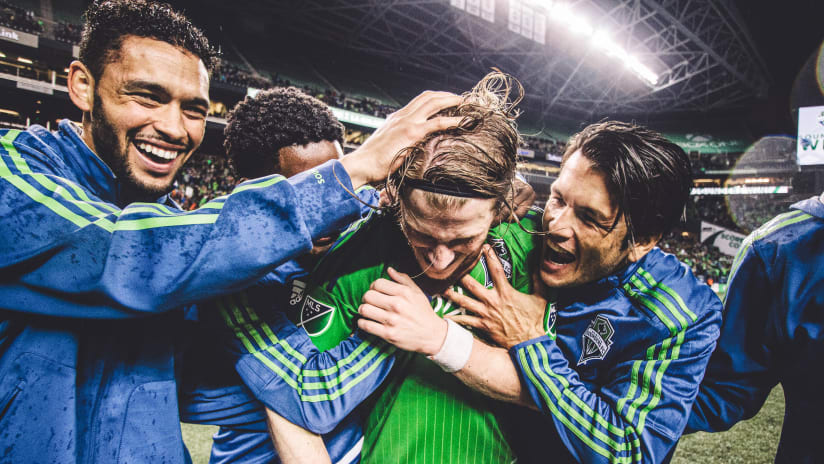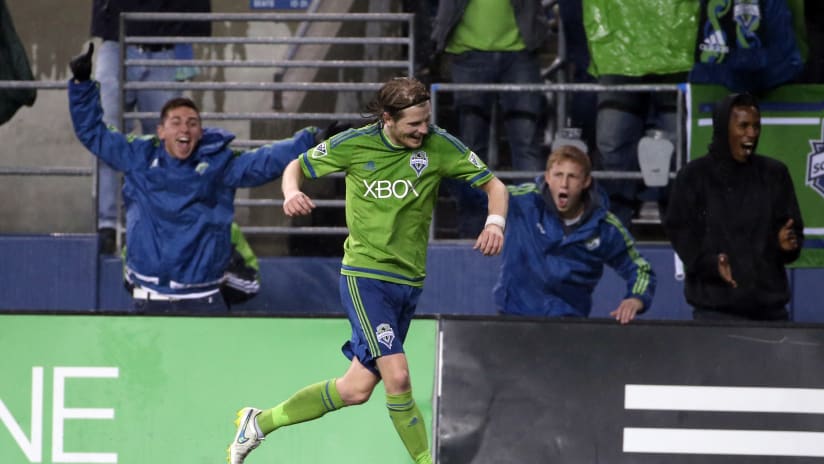If the Sounders have struggled in any one particular area early this season, it’s been in the important business of linking the lines.
And to better understand why that is, it helps to know the essential differences between Cristian Roldan and Erik Friberg, the latter of which has suddenly opened up Seattle to a whole new world of tactical options.
Friberg returned to Seattle for a second stint last summer after a few years spent bouncing around Europe. His role then is much the same as it is now. In 2015, Osvaldo Alonso and Gonzalo Pineda were practically pinned at the hip when the two started together, preferring to play off one another rather than detach and make lung-busting runs forward.
One of the reasons Seattle could do this with such panache in 2015 was largely because of the connection between Obafemi Martins and Clint Dempsey. The two were unquestionably the best striker tandem in the league, and they took turns dropping deep to open up moments of true attacking brilliance.
Friberg’s role was to provide a more direct counterweight to the attack. In lieu of racking up 500-plus passes per game, the Sounders would throw Friberg forward in spurts to break the back line. Friberg was good in this role, but it was clear he was still readjusting to the league and his teammates. There were a few stutters.
Pineda’s offseason retirement and Martins’ exodus to China shook up the paradigm, and Friberg’s early-season injury thrust Roldan into more of a Pineda role without the deep regista-like diagonal balls. While Roldan performed admirably defensively and was a general boon to the midfield, chance creation plummeted.
The Sounders were missing a link. And Friberg might have just provided it for them.
Friberg drew universally rave reviews for his performance in Seattle’s 2-0 win over San Jose on Saturday, and his absence on the MLS Team of the Week was a notable omission. Friberg was a hefty 50-56 passing, and more impressively he attempted nearly 60 percent of his passes in the attacking half of the field, where his success rate was an eye-popping 82 percent. These weren’t just casual foraging runs into the attacking portion of the field before retreating to the safety of his defensive cocoon. These were intentional, hard-charging and almost unerringly successful.
This is the essential difference in Seattle’s planning with Friberg on the field versus Roldan. Where Roldan is more withdrawn as a second No. 6 sitting next to Alonso, Friberg has the ability to be a truly modern No. 8, or a barnstorming central midfielder capable of occupying every strata of the game.
Take a look at Friberg’s heat map against San Jose.

There are two important things to note here: the large green blotch in front of the Seattle area and the bright specks of green in the attacking half. Those indicate a flurry of touches in both areas, meaning his starting position when the build began was rarely in the same neighborhood as his ending position. Friberg was knitting together passes like Betsy Ross weaving together the first American flag.
But there’s an even more important facet to all of this. And that’s what the attack does around him. More to the point, what Dempsey does.
Sounders coach Sigi Schmid has engaged in a conversation about Dempsey’s best usage at this point in his career through his deployment choices. He’s been moved around several times this season, from a dedicated striker role to one underneath both Nelson Valdez and Jordan Morris and even as a left winger in a 4-3-3, a position he hadn’t played consistently since his Fulham days.
Dempsey, though, couldn’t seem to stay tied to the penalty area. He was drifting backward. There are a few reasons for that, but the main one was that with both Alonso and Roldan on the field at the same time, the Sounders’ central midfield was neither providing over-the-top balls from deep or giving a consistent box-to-box link to plug Alonso in with the attack.
Friberg solved that problem by himself against San Jose. Take a look at the average positioning map for the Sounders’ starting XI on Saturday.

What you’ll notice is that this looks an awful lot like the 4-4-2 Schmid’s run for years. If Herculez Gomez was a touch wider, it’d be a dead ringer. But the most interesting man in this formation isn’t Friberg (8), it’s what Friberg’s advanced positioning did to Dempsey (2). It, in turn, pushed Dempsey higher. Whether Dempsey didn’t feel like he needed to drop deeper or was simply getting better service in general, he did what most agree is his best role at this stage in his career; played as the second striker.
This could be what the Sounders have been looking for. It’s anyone’s guess how Valdez fits into all of this, but when he returns to full fitness it certainly looks like Andreas Ivanschitz could plug directly into this formation in Gomez’s slot and not miss a beat.
With Ivanschitz providing more direct service and Friberg pulling the two lines together with his dizzying runs, the Sounders may have just settled on the best possible way forward before reinforcements arrive.
And it turns out the missing link was Erik Friberg.





